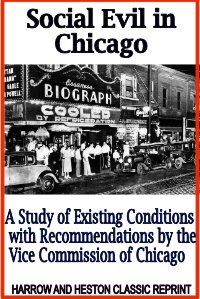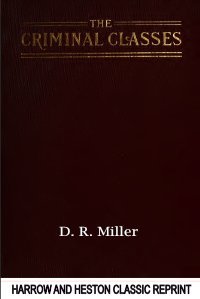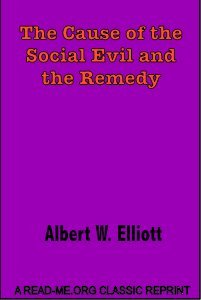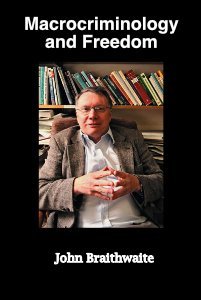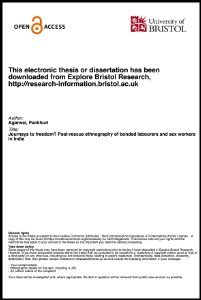By D. R. Miller.
“A law demanding only a refrain from violence or abstinence from all that may injure others contains but the negative, while it is lacking in the more important, the positive elements. If men, by closing their eyes to the existence of evil, could thereby banish it, then might it be best for all to close their eyes….it is quite certain that we can never hope to discover, through ignorance, what are the various types of criminal abnormality, nor know the many causes or cures for such estrangements. An intelligent and thorough study of the criminal problem will eliminate from our creed that fatalistic formula which asserts that ‘Evil is good not understood’…”
United Brethren Publishing House (1903) 224 pages.
Edited by CALS (Coalition of African Lesbians) and AMSHeR.
Violence against sexual minorities in Africa is rife. Persons belonging to or perceived to be members of the broad grouping ‘lesbian, gay, bisexual, transgender and intersex (LGBTI)’ are often victim of violence in African states. This violence is sometimes perpetrated by state actors, such as the members of the Police force, and more often by ordinary persons (non-state actors). By condoning violence by state actors, and by failing to diligently investigate, prosecute and punish the perpetrators of these acts, states fail to respect the basic right to security of some of its citizens. By condoning these actions, or by failing to act effectively, the state also violates its human rights obligations. The argument of this report is not that sexual minorities deserve special protection, but that they are entitled to the rights all other citizens have – the right to security, liberty, life, dignity, and a fair trial.
As members of the African Union, states are party to and should abide by their obligations under the African Charter on Human and Peoples’ Rights (African Charter). Like several other regional and international human rights instruments, the African Charter guarantees freedom from discrimination, and equal protection and equality of individuals and peoples’ before the law (articles 2, 3 and 19). The African Commission on Human and Peoples’ Rights (African Commission), the body monitoring compliance with the African Charter, has in various communications presented to it denounced acts of discrimination on several of the listed grounds of discrimination and has clearly established that ‘other status’ (in article 2 of the Charter) can be broadly interpreted to include grounds other than those explicitly listed under that provision of the African Charter. The Commission made its first pronouncement on sexual orientation and gender identity (SOGI) issues in its Concluding Observations on Cameroon’s periodic report of 2005 by expressing concern about the upsurge in intolerance towards sexual minorities. Most recently, the Chairperson of the Commission issued a statement on in April 2013 stating that the he Commission ‘equally denounces violence committed against individuals based on their sexual orientation as part of its mandate to protect individuals from all forms of violence’.
Pretoria: Pretoria University Law Press, 2013. 57p.
By Albert W. Elliott.
“In the following pages, I purpose to lay bare the stark facts of the Social Evil, believing that public knowledge of conditions as they really are will prove a power for good; I will strive to tell the unflinching truth, pitiless though it appears, for therein lies the world’s only hope of freedom from error and vice. This book, my reader, is meat for strong men, not milk for babes. The author has devoted six years of his life to rescue work among fallen women, has studied the underworld from New Orleans to New York, from the Atlantic to the Pacific ; has entered on the course of his mission, more than three thousand houses of shame and talked with more than fifteen thousand inmates ; he has walked the valley of this terrible shadow meeting its blackened spirits face to face, searching their innermost secrets, praying and working for their deliverance, and crying from the depth of his soul over the hopeless tragedy of it all. Of the intimate, accurate, heart-crushing ex- perience thus gathered, this book is a faithful record.”
Atlanta, GA: Webb & Vary Co., 1914..
By John Braithwaite.
How can power over others be transformed to ‘power with’? It is possible to transform many institutions to build societies with less predation and more freedom. These stretch from families and institutions of gender to the United Nations. Some societies, times and places have crime rates a hundred times higher than others. Some police forces kill at a hundred times the rate of others. Some criminal corporations kill thousands more than others. Micro variables fail to explain these patterns. Prevention principles for that challenge are macrocriminological.
Freedom is conceived in a republican way as non-domination. Tempering domination prevents crime; crime prevention reduces domination. Many believe a high crime rate is a price of freedom. Not Braithwaite. His principles of crime control are to build freedom, temper power, lift people from poverty and reduce all forms of domination. Freedom requires a more just normative order. It requires cascading of peace by social movements for non-violence and non-domination. Periods of war, domination and anomie cascade with long lags to elevated crime, violence, inter-generational self-violence and ecocide. Cybercrime today poses risks of anomic nuclear wars.
Braithwaite’s proposals refine some of criminology’s central theories and sharpen their relevance to all varieties of freedom. They can be reduced to one sentence. Strengthen freedom to prevent crime, prevent crime to strengthen freedom.
Canberra: Australian National University Press, 2022. 814p.
By Pankhuri Agarwal.
Working with a simplistic notion of release from bondage as “freedom”, mainstream anti-trafficking activists focus on rescue. They argue that victims of trafficking are “free” once removed from their employers. Critics contest this approach and argue that significantly less attention is paid to the role of the state and the NGOs in producing conditions due to which people remain vulnerable. This research lends empirical support to this critical position through a multi-sited ethnography of informal migrant workers, sex workers, and law enforcement officers, traversing through courtrooms, police stations, district welfare offices, worksites, shelter homes, and offices of NGOs, in New Delhi, India. It corroborates that the authority of law is compromised ‘on ground’ and is actively negotiated within the legal space of anti-trafficking efforts. Instead of being instantly transported to “freedom”, the workers end up in protracted legal proceedings, ranging two to thirty-seven years, to seek justice and rights. Their rights are neglected due to a Kafkaesque bureaucracy. Their mobility is restricted due to improper documentation. Their suffering is intensified through an evasive legal system. The result – arbitrary, unjust legal outcomes after an endless wait and dependence on intermediaries. In fact, their journey through the system, with cost and time overruns, has no direct or precise chronology, and often moves in a circle rather than reaching an end. The workers resemble the class of people that Denise Ferreira da Silva (2009) describes as “nobodies”. They continue to struggle to achieve the rights and recognition that would allow them to escape this status. The combination of empirical data, doctrinal analysis, and socio-legal theory in this research provide an insight on the harm and limits of the anti-trafficking discourse with reference to India.
Bristol, UK: University of Bristol, 2021. 233p.



